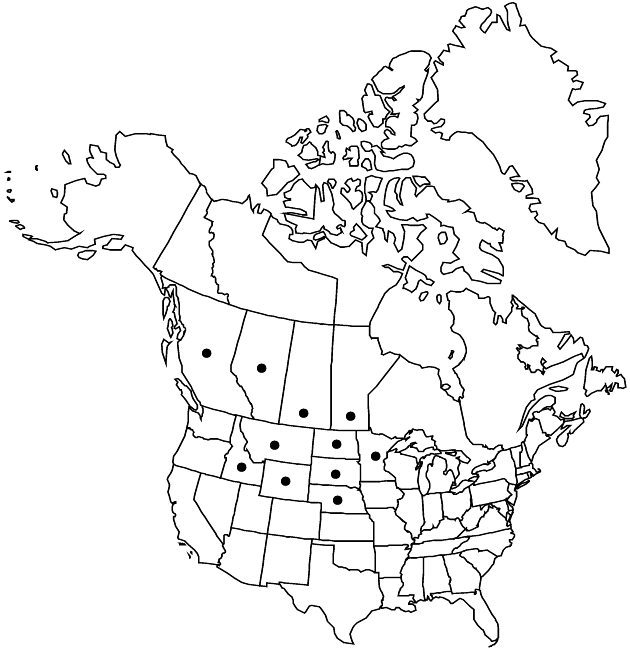Difference between revisions of "Artemisia longifolia"
Gen. N. Amer. Pl. 2: 142. 1818.
imported>Volume Importer |
RevisionBot (talk | contribs) m (Bot: Adding category Revised Since Print) |
||
| Line 108: | Line 108: | ||
}}<!-- | }}<!-- | ||
| − | -->[[Category:Treatment]][[Category:Artemisia subg. Artemisia]] | + | --> |
| + | |||
| + | [[Category:Treatment]] | ||
| + | [[Category:Artemisia subg. Artemisia]] | ||
| + | [[Category:Revised Since Print]] | ||
Latest revision as of 14:27, 15 December 2020
Perennials, 20–80 cm (not cespitose), pleasantly aromatic (fibrous-rooted, rootstocks relatively short, horizontal, layered stems sometimes sprouting). Stems 3–20+, erect, gray-green, usually simple, sometimes branched (bases woody), densely tomentose. Leaves cauline, bicolor (white and green); blades linear to lanceolate, 3–12 × 1 cm, margins usually entire, sometimes toothed or lobed, faces densely tomentose (abaxial) or glabrate (adaxial). Heads (peduncles 0 or to 2 mm) in mostly racemiform arrays 8–13 × 1–2 cm. Involucres campanulate, 4–5 × 4–5 mm. Phyllaries ovatelanceolate (margins hyaline), densely to sparsely tomentose. Florets: pistillate 3–10; bisexual 8–26; corollas pale-yellow, 1–2 mm, sparsely glandular. Cypselae ellipsoid, 0.5–0.8 mm, glabrous. 2n = 36.
Phenology: Flowering mid summer–early fall.
Habitat: Alkaline flats, grasslands, barren areas, high plains
Elevation: 500–1800 m
Distribution

Alta., B.C., Man., Sask., Idaho, Minn., Mont., Nebr., N.Dak., S.Dak., Wyo.
Discussion
Artemisia longifolia appears to be more salt-tolerant than most species of the genus. It is closely related to A. ludoviciana.
Selected References
None.